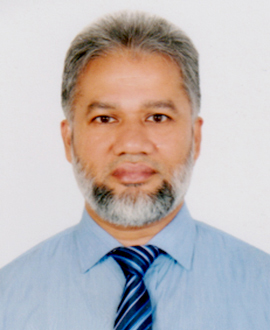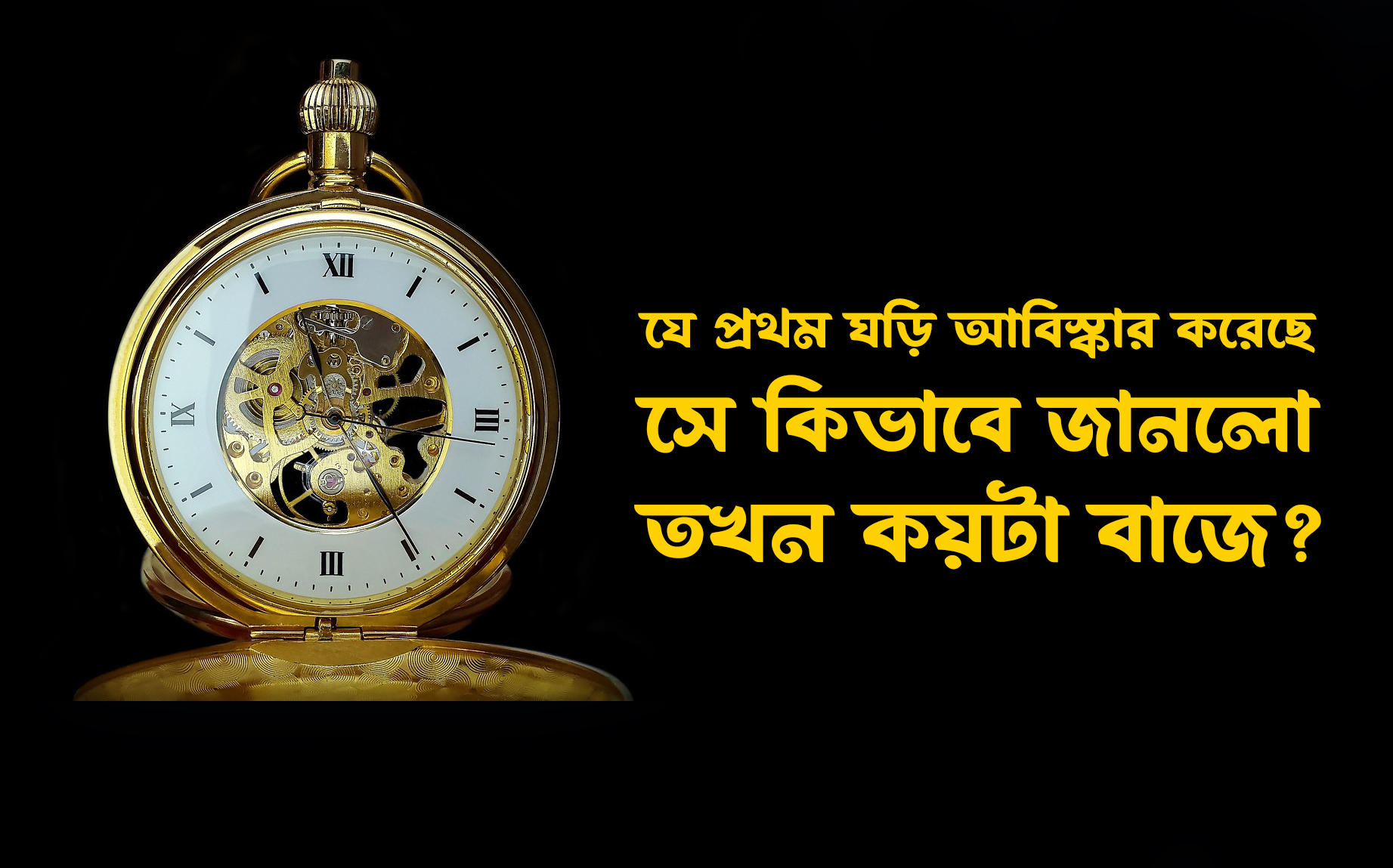EIM For Construction Level-2 Suggestion V-2
Written Test EIM For Construction Level-2 Suggestion V-2 by Job Edu BD
First, test yourself with the following MCQs, if you can’t do it, you can check the answer by clicking on the answer button.
EIM For Construction Level-2 Suggestion V-2
- P=VI Cosǿ
- P=VI
- PxVxI
- কোনটিই নয়
- P=√3VICosǿ
- P=VI
- PxVxI
- সবগুলো
- ব্রিটেনিয়া জয়েন্ট
- স্লীভ জয়েন্ট
- টি জয়েন্ট ওয়েস্টার্ণ জয়েন্ট
- পিগ টেইল জয়েন্ট
- ব্রিটেনিয়া জয়েন্ট
- স্লীভ জয়েন্ট
- উভয় জয়েন্ট
- কোনটাই না
- ওহম
- কারেন্ট
- ভোল্ট
- সব গুলো
6.বৈদ্যুতিক রেগুলেশান অনুযায়ী সমতল এলাকায় সর্বোচ্চ আর্থ রেজিস্ট্যান্স কত হয়?
- ৫ ওহম
- ৩ ওহম
- ১ ওহম
- ৪ ওহম
7.বৈদ্যুতিক রেগুলেশন অনুযায়ী পাহাড়ি এলাকায় সর্বোচ্চ আর্থ- রেজিস্ট্যান্স হয়?
- ৫ ওহম
- ২ ওহম
- ৩ ওহম
- ৮ ওহম
8.ফ্যান কমানো বাড়ানোর কাজে ব্যবহৃত হয়-
- বাতি
- ডায়োড
- সুইচ
- রেগুলেটর
9.পি.ভি.সি একটি নাম-
- ক্যাবলের
- তারের
- সুইচের
- সকেটের
10.বৈদ্যুতিক রেগুলেশান অনুযায়ী বাসা-বাড়ীর সর্বোচ্চ আর্থ রেজিস্ট্যান্স কত হয়?
- ৫ ওহম
- ৩ ওহম
- ১ ওহম
- ৪ ওহম
11.ভোল্ট মিটার দিয়ে পরিমাপ করা হয়-
- ভোল্টেজ
- কারেন্ট
- রেজিস্ট্যান্স
- ওয়াট
12.এ্যামমিটার দিয়ে পরিমাপ করা হয়-
- ভোল্টেজ
- কারেন্ট
- রেজিস্ট্যান্স
- ওয়াট
13.ওয়াটমিটার দিয়ে পরিমাপ করা হয়-
- ভোল্টেজ
- কারেন্ট
- রেজিস্ট্যান্স
- ওয়াট
14.এ্যামমিটার সংযোগ করা হয়-
- সিরিজে
- লোডের সাথে সিরিজে
- লোডের সাথে প্যারালালে
- মিশ্র
15.ভোল্ট মিটার সংযোগ করা হয়-
- এনার্জি মিটারের সাথে সিরিজে
- লোডের সাথে সিরিজে
- লোডের সাথে প্যারালালে
- মিশ্র
Short Questions-
16.ওয়্যারিং এ লাল, সবুজ ও কালো রংয়ের তার দ্বারা কি বুঝায় ?
17.১৩ এ্যাম্পিয়ার এর সকেটের জন্য তারের সাইজ কত ?
18.ওয়্যার স্টিপায়ার কাজ কি ?
19.টেস্ট র্বোড দিয়ে কি কি টেস্ট করা হয় ?
20.ভোল্ট মিটার দিয়ে বিদ্যুতের কোন রাশি পরিমান করা হয় ?
21.এ্যাম মিটার দিয়ে বিদ্যুতের কোন রাশি পরিমাপ করা হয় ?22.আর্থ টেস্টার দিয়ে বিদ্যুতের কোন রাশি পরিমাপ করা হয় ?
23.এনার্জি মিটার বিদ্যুতের কোন রাশি পরিমাপ করা হয় ?
24.ওয়াট মিটার বিদ্যুতের বিল পরিমাপ করা হয় ?
25.বিনা সংযোগে কারেন্ট পরিমাপ করা হয় কোন যন্ত্রেও সাহায্যে ?
26.ফ্রিকোয়েন্সী মিটার বিদ্যুতের কোন রাশি পরিমাপ করা হয় ?27.পাওয়ার ফ্যাক্টর মিটার বিদ্যুতের কোন রাশি পরিমাপ করা হয় ?
28.মাইক্রোমিটার দিয়ে কোন রাশি পরিমাপ করা হয় ?
29.ওয়্যার গেজ দিয়ে কোন রাশি পরিমাপ করা হয় ?30.ক্যাপাসিটর সিরিজে সংযোগ করলে কি হয় ?
B. P=VI
A. P=√3VICosǿ
D. পিগ টেইল জয়েন্ট
A. ব্রিটেনিয়া জয়েন্ট
A. ওহম
6.বৈদ্যুতিক রেগুলেশান অনুযায়ী সমতল এলাকায় সর্বোচ্চ আর্থ রেজিস্ট্যান্স কত হয়?
A. ৫ ওহম
7.বৈদ্যুতিক রেগুলেশন অনুযায়ী পাহাড়ি এলাকায় সর্বোচ্চ আর্থ- রেজিস্ট্যান্স হয়?
D. ৮ ওহম
8.ফ্যান কমানো বাড়ানোর কাজে ব্যবহৃত হয়-
D. রেগুলেটর
9.পি.ভি.সি একটি নাম-
A. ক্যাবলের
10.বৈদ্যুতিক রেগুলেশান অনুযায়ী বাসা-বাড়ীর সর্বোচ্চ আর্থ রেজিস্ট্যান্স কত হয়?
A. ৫ ওহম
11.ভোল্ট মিটার দিয়ে পরিমাপ করা হয়-
A. ভোল্টেজ
12.এ্যামমিটার দিয়ে পরিমাপ করা হয়-
B. কারেন্ট
13.ওয়াটমিটার দিয়ে পরিমাপ করা হয়-
D. ওয়াট
14.এ্যামমিটার সংযোগ করা হয়-
B. লোডের সাথে সিরিজে
15.ভোল্ট মিটার সংযোগ করা হয়-
C. লোডের সাথে প্যারালালে
Short Questions-
16.ওয়্যারিং এ লাল, সবুজ ও কালো রংয়ের তার দ্বারা কি বুঝায় ?
উত্তরঃলাল = ফেজ তার,কালো = নিউট্রাল তারও সবুজ = আর্থিং তার বুঝায়।
17.১৩ এ্যাম্পিয়ার এর সকেটের জন্য তারের সাইজ কত ?
উত্তরঃ১৩ এ্যাম্পিয়ার এর সকেটের জন্য ২.৫ আর এম সাইজের ক্যাবল লাগবে।
18.ওয়্যার স্টিপায়ার কাজ কি ?
উত্তরঃওয়্যার স্টিপায়ার কাজ হল তারের ইনসুলেশান অপসারন করা এবং তার কাটা।
19.টেস্ট র্বোড দিয়ে কি কি টেস্ট করা হয় ?
উত্তরঃটেস্ট র্বোড দিয়ে চোক কয়েল, ফ্যানের কয়েল, মোটরের কয়েল,কন্টিনিউটি ও ইনসুলেশান টেস্ট করা হয়।
20.ভোল্ট মিটার দিয়ে বিদ্যুতের কোন রাশি পরিমান করা হয় ?
উত্তরঃভোল্ট মিটার দিয়ে বিদ্যুতের ভোল্টেজ পরিমান করা হয়।
21.এ্যাম মিটার দিয়ে বিদ্যুতের কোন রাশি পরিমাপ করা হয় ?
উত্তরঃএ্যাম মিটার দিয়ে বিদ্যুতের কারেন্ট পরিমাপ করা হয়।
22.আর্থ টেস্টার দিয়ে বিদ্যুতের কোন রাশি পরিমাপ করা হয় ?
উত্তরঃআর্থ টেস্টার দিয়ে আর্থ রেজিস্ট্যান্স পরিমাপ করা হয়।
23.এনার্জি মিটার বিদ্যুতের কোন রাশি পরিমাপ করা হয় ?
উত্তরঃএনার্জি মিটার বিদ্যুতের বিল পরিমাপ করা হয়।
24.ওয়াট মিটার বিদ্যুতের বিল পরিমাপ করা হয় ?
উত্তরঃওয়াট মিটার বিদ্যুতের পাওয়ার পরিমাপ করা হয় ?
25.বিনা সংযোগে কারেন্ট পরিমাপ করা হয় কোন যন্ত্রেও সাহায্যে ?
উত্তরঃক্লাম্প অন মিটারের সাহায্যে। মিটার বিদ্যুতের বিল পরিমাপ করা হয়।
26.ফ্রিকোয়েন্সী মিটার বিদ্যুতের কোন রাশি পরিমাপ করা হয় ?
উত্তরঃ ফ্রিকোয়েন্সী মিটার বিদ্যুতের ফ্রিকোয়েন্সী পরিমাপ করা হয়।
27.পাওয়ার ফ্যাক্টর মিটার বিদ্যুতের কোন রাশি পরিমাপ করা হয় ?
উত্তরঃপাওয়ার ফ্যাক্টর মিটার বিদ্যুতের পাওয়ার ফ্যাক্টর পরিমাপ করা হয়।
28.মাইক্রোমিটার দিয়ে কোন রাশি পরিমাপ করা হয় ?
উত্তরঃমাইক্রোমিটার দিয়ে তারের ব্যাস পরিমাপ করা হয়।
29.ওয়্যার গেজ দিয়ে কোন রাশি পরিমাপ করা হয় ?
উত্তরঃওয়্যার গেজ দিয়ে তারের ব্যাস পরিমাপ করা হয়।
30.ক্যাপাসিটর সিরিজে সংযোগ করলে কি হয় ?
উত্তরঃমোট ক্যাপাসিটেন্যান্স কমে যায়।

Engr. Md. Matiar Rahman
B.Sc in (EEE) (ADUST)
Senior Instructor
In-Charge (EIM)
Bangladesh-German Technical Training Center
Mirpur-2, Dhaka-1216
Try Now: Computer Operation Level-3 Vol-5
"You will pass just by asking the mentioned questions, it's not like that at all, but chances are upto 80% to get common. This is just a suggestion. This question is not copied from any board question"
Electrical engineering is an engineering discipline concerned with the study, design, and application of equipment, devices, and systems which use electricity, electronics, and electromagnetism. It emerged as an identifiable occupation in the latter half of the 19th century after the commercialization of the electric telegraph, the telephone, and electrical power generation, distribution, and use.
Electrical engineering is now divided into a wide range of different fields, including computer engineering, systems engineering, power engineering, telecommunications, radio-frequency engineering, signal processing, instrumentation, photovoltaic cells, electronics, and optics and photonics. Many of these disciplines overlap with other engineering branches, spanning a huge number of specializations including hardware engineering, power electronics, electromagnetics and waves, microwave engineering, nanotechnology, electrochemistry, renewable energies, mechatronics/control, and electrical materials science.
Electrical engineers typically hold a degree in electrical engineering or electronic engineering. Practicing engineers may have professional certification and be members of a professional body or an international standards organization. These include the International Electrotechnical Commission (IEC), the Institute of Electrical and Electronics Engineers (IEEE) and the Institution of Engineering and Technology (IET, formerly the IEE).
Electrical engineers work in a very wide range of industries and the skills required are likewise variable. These range from circuit theory to the management skills of a project manager. The tools and equipment that an individual engineer may need are similarly variable, ranging from a simple voltmeter to sophisticated design and manufacturing software.
History
Electricity has been a subject of scientific interest since at least the early 17th century. William Gilbert was a prominent early electrical scientist, and was the first to draw a clear distinction between magnetism and static electricity. He is credited with establishing the term “electricity”. He also designed the versorium: a device that detects the presence of statically charged objects. In 1762 Swedish professor Johan Wilcke invented a device later named electrophorus that produced a static electric charge. By 1800 Alessandro Volta had developed the voltaic pile, a forerunner of the electric battery.
19th century

In the 19th century, research into the subject started to intensify. Notable developments in this century include the work of Hans Christian Ørsted, who discovered in 1820 that an electric current produces a magnetic field that will deflect a compass needle; of William Sturgeon, who in 1825 invented the electromagnet; of Joseph Henry and Edward Davy, who invented the electrical relay in 1835; of Georg Ohm, who in 1827 quantified the relationship between the electric current and potential difference in a conductor; of Michael Faraday, the discoverer of electromagnetic induction in 1831; and of James Clerk Maxwell, who in 1873 published a unified theory of electricity and magnetism in his treatise Electricity and Magnetism.
In 1782, Georges-Louis Le Sage developed and presented in Berlin probably the world’s first form of electric telegraphy, using 24 different wires, one for each letter of the alphabet. This telegraph connected two rooms. It was an electrostatic telegraph that moved gold leaf through electrical conduction.
In 1795, Francisco Salva Campillo proposed an electrostatic telegraph system. Between 1803 and 1804, he worked on electrical telegraphy, and in 1804, he presented his report at the Royal Academy of Natural Sciences and Arts of Barcelona. Salva’s electrolyte telegraph system was very innovative though it was greatly influenced by and based upon two discoveries made in Europe in 1800—Alessandro Volta’s electric battery for generating an electric current and William Nicholson and Anthony Carlyle’s electrolysis of water. Electrical telegraphy may be considered the first example of electrical engineering. Electrical engineering became a profession in the later 19th century. Practitioners had created a global electric telegraph network, and the first professional electrical engineering institutions were founded in the UK and the US to support the new discipline. Francis Ronalds created an electric telegraph system in 1816 and documented his vision of how the world could be transformed by electricity. Over 50 years later, he joined the new Society of Telegraph Engineers (soon to be renamed the Institution of Electrical Engineers) where he was regarded by other members as the first of their cohort. By the end of the 19th century, the world had been forever changed by the rapid communication made possible by the engineering development of land-lines, submarine cables, and, from about 1890, wireless telegraphy.
Practical applications and advances in such fields created an increasing need for standardized units of measure. They led to the international standardization of the units volt, ampere, coulomb, ohm, farad, and henry. This was achieved at an international conference in Chicago in 1893. The publication of these standards formed the basis of future advances in standardization in various industries, and in many countries, the definitions were immediately recognized in relevant legislation.
During these years, the study of electricity was largely considered to be a subfield of physics since early electrical technology was considered electromechanical in nature. The Technische Universität Darmstadt founded the world’s first department of electrical engineering in 1882 and introduced the first-degree course in electrical engineering in 1883. The first electrical engineering degree program in the United States was started at Massachusetts Institute of Technology (MIT) in the physics department under Professor Charles Cross, though it was Cornell University to produce the world’s first electrical engineering graduates in 1885. The first course in electrical engineering was taught in 1883 in Cornell’s Sibley College of Mechanical Engineering and Mechanic Arts.
In about 1885, Cornell President Andrew Dickson White established the first Department of Electrical Engineering in the United States.[15] In the same year, University College London founded the first chair of electrical engineering in Great Britain. Professor Mendell P. Weinbach at University of Missouri established the electrical engineering department in 1886. Afterwards, universities and institutes of technology gradually started to offer electrical engineering programs to their students all over the world.
During these decades the use of electrical engineering increased dramatically. In 1882, Thomas Edison switched on the world’s first large-scale electric power network that provided 110 volts—direct current (DC)—to 59 customers on Manhattan Island in New York City. In 1884, Sir Charles Parsons invented the steam turbine allowing for more efficient electric power generation. Alternating current, with its ability to transmit power more efficiently over long distances via the use of transformers, developed rapidly in the 1880s and 1890s with transformer designs by Károly Zipernowsky, Ottó Bláthy and Miksa Déri (later called ZBD transformers), Lucien Gaulard, John Dixon Gibbs and William Stanley, Jr. Practical AC motor designs including induction motors were independently invented by Galileo Ferraris and Nikola Tesla and further developed into a practical three-phase form by Mikhail Dolivo-Dobrovolsky and Charles Eugene Lancelot Brown. Charles Steinmetz and Oliver Heaviside contributed to the theoretical basis of alternating current engineering. The spread in the use of AC set off in the United States what has been called the war of the currents between a George Westinghouse backed AC system and a Thomas Edison backed DC power system, with AC being adopted as the overall standard.
Post review
Finding Your Post
NSQF / NTVQF CAD Operation Level-3 Suggestion V-2, NSQF NTVQF, CAD Operation Level-3 Suggestion V-2, Job Edu BD, NSDA BTEB, NSDA / BTEB Suggestion Vol-1 NSQF NTVQF NSDA BTEB
NSQF / NTVQF CAD Operation Level-3 Suggestion V-2, NSQF NTVQF, CAD Operation Level-3 Suggestion V-2, Job Edu BD, NSDA BTEB, NSDA / BTEB Suggestion Vol-1 NSQF NTVQF NSDA BTEB
NSQF / NTVQF CAD Operation Level-3 Suggestion V-2, NSQF NTVQF, CAD Operation Level-3 Suggestion V-2, Job Edu BD, NSDA BTEB, NSDA / BTEB Suggestion Vol-1 NSQF NTVQF NSDA BTEB



